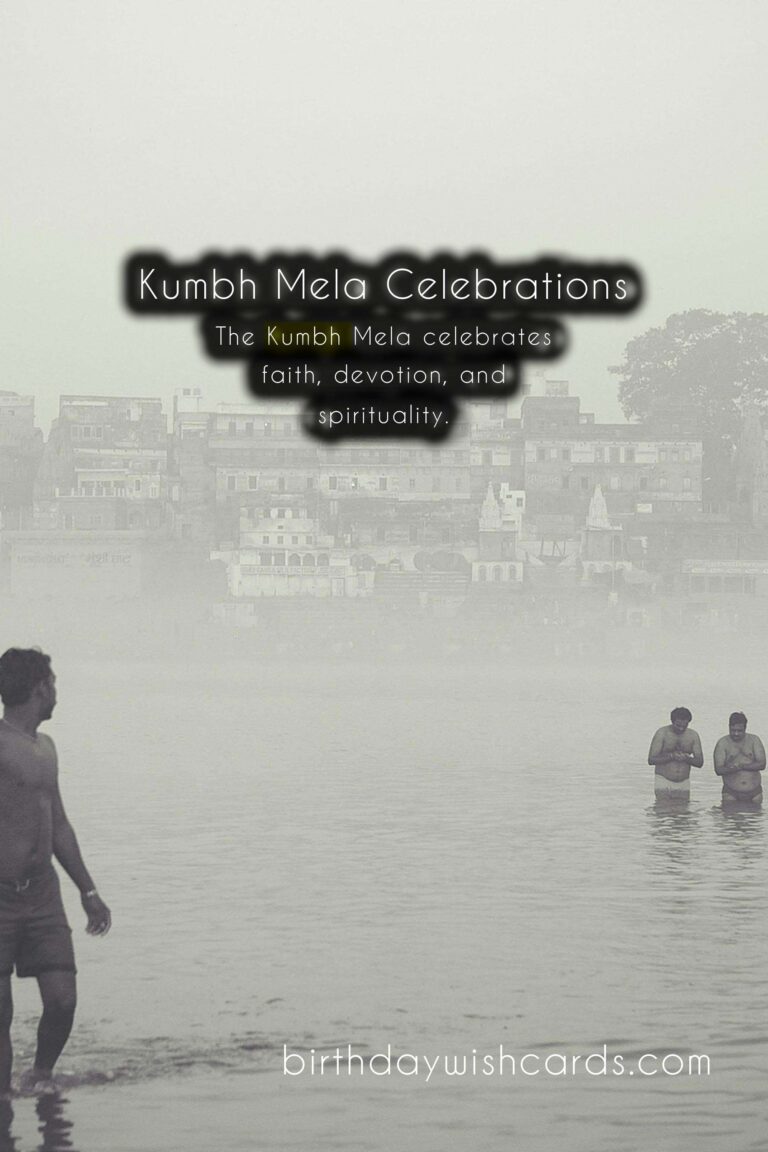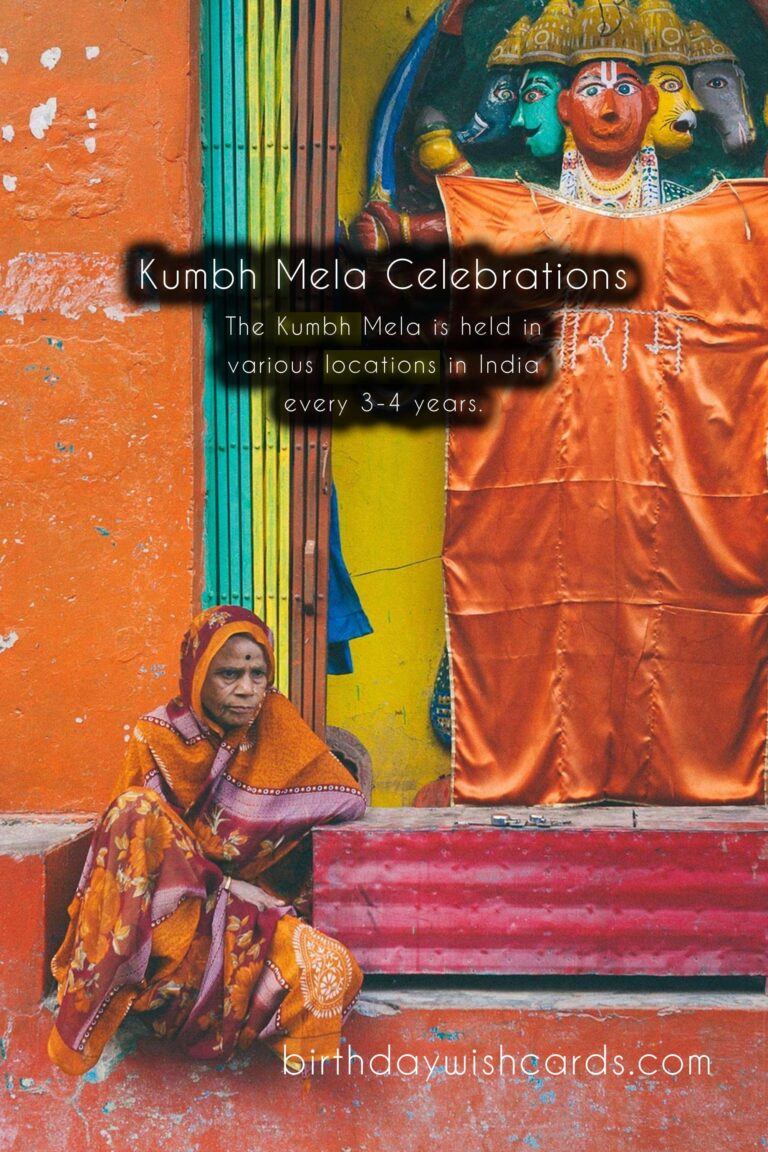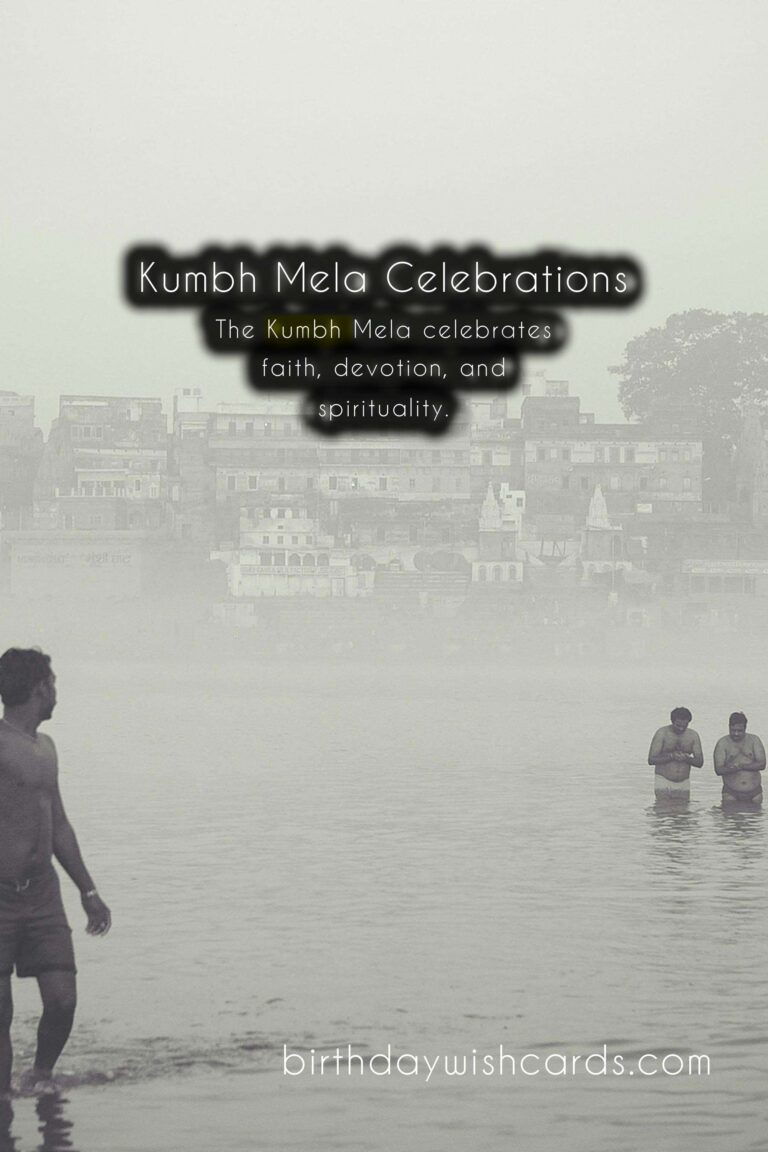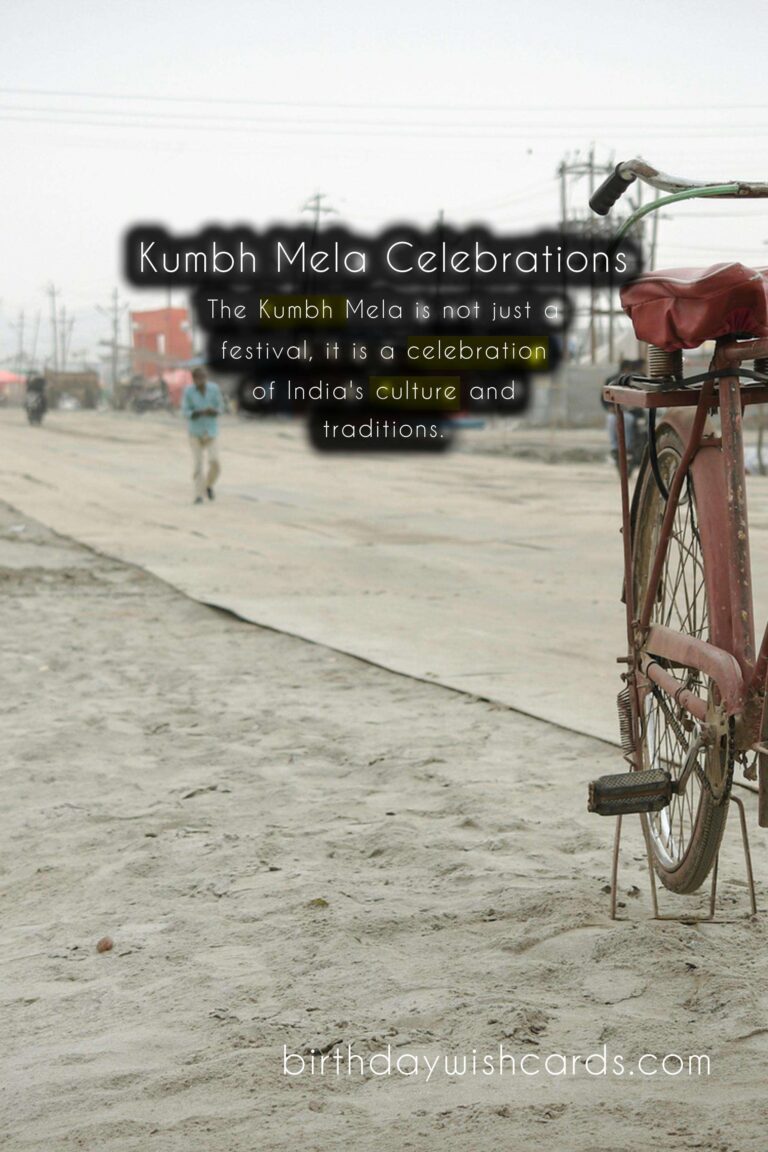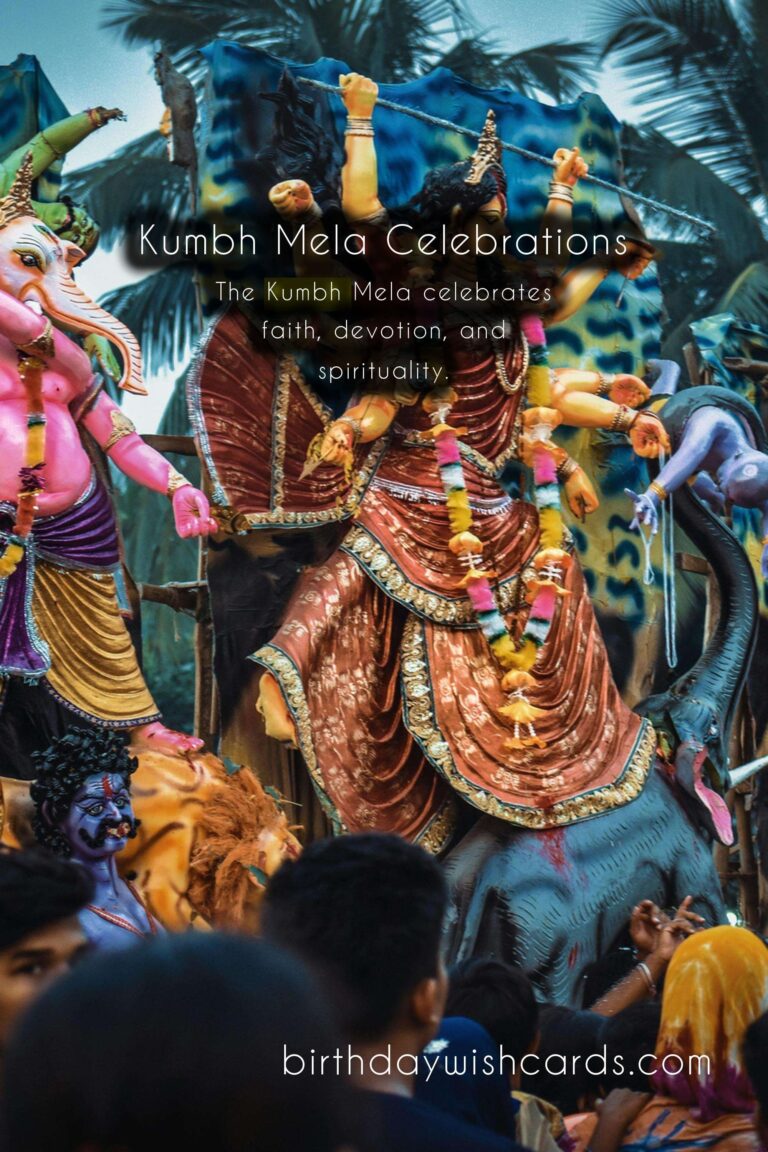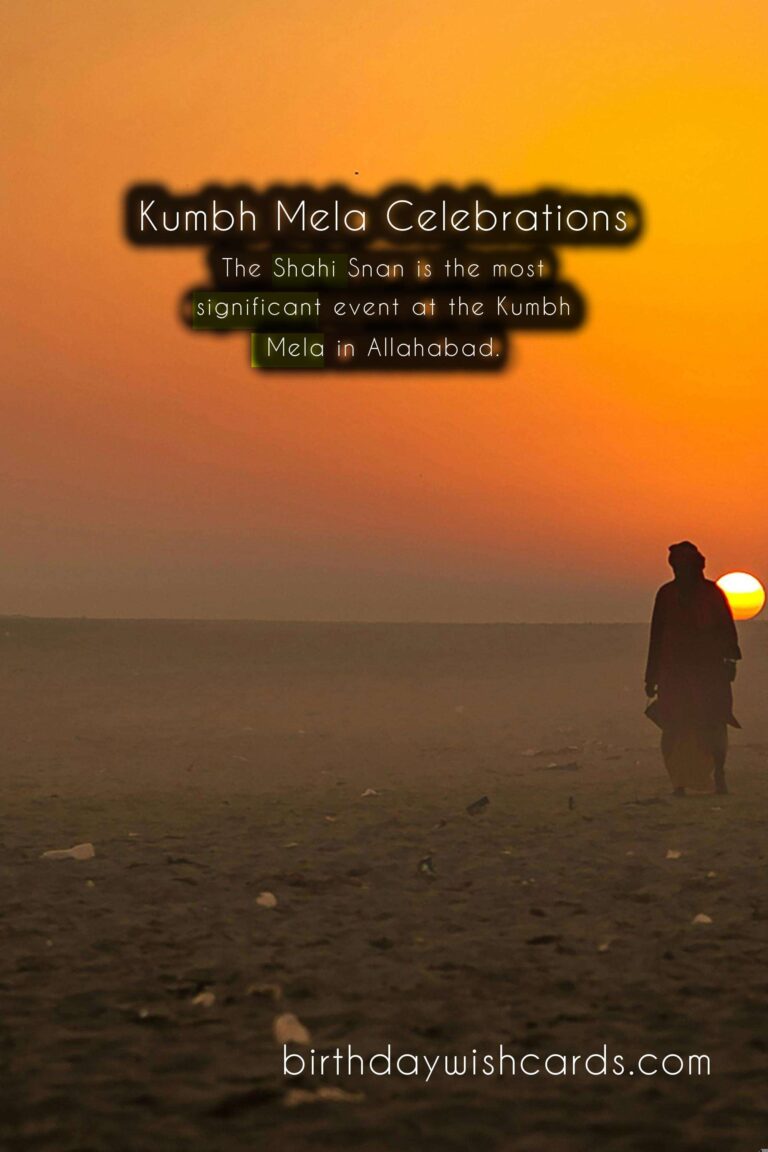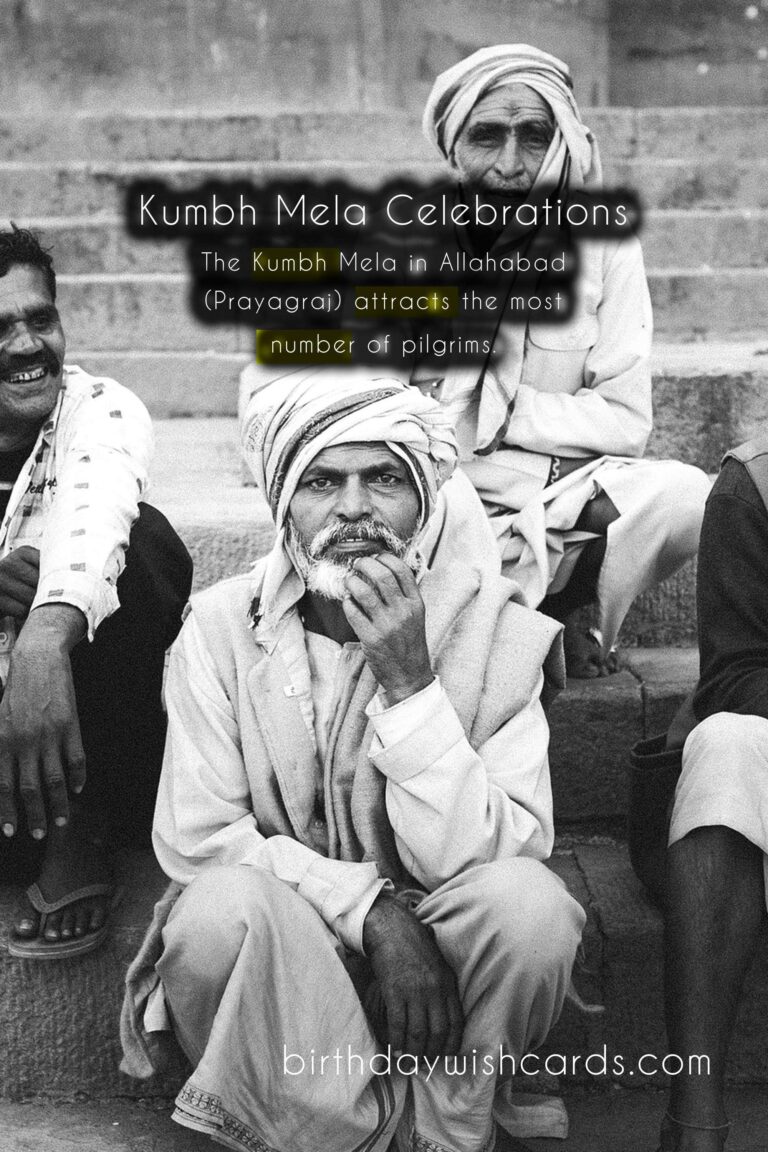 The Kumbh Mela is the largest religious gathering in the world, attracting millions of devotees and travelers from different parts of the globe. This ancient tradition dates back to thousands of years, and is held in various locations in India every 3-4 years. The world is captivated by the grandeur of this religious festival, which celebrates faith, devotion, and spirituality. From the ritual baths in sacred rivers to the vibrant processions and cultural festivities, the Kumbh Mela is a truly one-of-a-kind experience that leaves a lasting impression on all those who attend.
The Kumbh Mela is the largest religious gathering in the world, attracting millions of devotees and travelers from different parts of the globe. This ancient tradition dates back to thousands of years, and is held in various locations in India every 3-4 years. The world is captivated by the grandeur of this religious festival, which celebrates faith, devotion, and spirituality. From the ritual baths in sacred rivers to the vibrant processions and cultural festivities, the Kumbh Mela is a truly one-of-a-kind experience that leaves a lasting impression on all those who attend.
History of the Kumbh Mela
The word ‘Kumbh’ is derived from the Sanskrit word ‘Kumbha’ meaning ‘pitcher’ or ‘pot’, which is associated with a Hindu mythological story. According to the story, the Hindu gods and demons fought over the elixir of life, and a few drops of the nectar fell in four different locations – Allahabad, Haridwar, Nashik, and Ujjain. It is believed that these locations are where the Kumbh Mela is held.
Significance of the Kumbh Mela
The Kumbh Mela is more than just a religious festival, it is a symbol of unity, diversity, and spirituality. It is a time for people to gather and celebrate their faith, and also a time for pilgrims to seek blessings and enlightenment. The festival is a testament to the rich cultural and spiritual heritage of India, and has been recognized by UNESCO as an Intangible Cultural Heritage of Humanity.
Kumbh Mela in Allahabad
The Kumbh Mela in Allahabad (now known as Prayagraj) is the largest and most famous of all the Kumbh Melas. It is held every 12 years on the banks of the confluence of the sacred rivers Ganga, Yamuna, and Saraswati. The most significant event at this Kumbh Mela is the Shahi Snan, where thousands of sadhus (Hindu holy men) take a dip in the holy waters to purify their souls.
Kumbh Mela in Haridwar
The Kumbh Mela in Haridwar is held every 12 years, and is also known as the ‘gateway to the gods’. It is held on the banks of the river Ganga, and is considered to be one of the holiest places for Hindus. The major highlight of this Kumbh Mela is the Ganga Aarti, a daily ritual of worshiping the river Ganga with lights and flowers.
Kumbh Mela in Nashik
The Kumbh Mela in Nashik is held every 12 years on the banks of the Godavari River. It is known for its magnificent royal processions, which are led by thousands of sadhus. The Kumbh Mela in Nashik is also famous for its colorful cultural events and exhibitions that showcase the diversity of India.
Kumbh Mela in Ujjain
The Kumbh Mela in Ujjain is held every 12 years on the banks of the river Shipra. It is known for its grand processions of sadhus and cultural programs, including devotional music and dance performances. The most significant event at this Kumbh Mela is the ritual bathing in the Shipra River, which is believed to cleanse one’s soul.
Conclusion
The Kumbh Mela is not just a festival, it is a celebration of the rich cultural heritage and traditions of India. The spiritual energy, cultural vibrancy, and grandeur of this festival are unmatched, making it a must-visit for anyone looking to experience the essence of India. So, plan your trip to the next Kumbh Mela and immerse yourself in the divine aura of this grand event. The Kumbh Mela is an ancient tradition that dates back to thousands of years. The Kumbh Mela is held in various locations in India every 3-4 years. Millions of devotees and travelers from around the world attend the Kumbh Mela. The Kumbh Mela celebrates faith, devotion, and spirituality. The festival is a symbol of unity, diversity, and spirituality. The Kumbh Mela has been recognized as an Intangible Cultural Heritage of Humanity by UNESCO. The Kumbh Mela in Allahabad (Prayagraj) attracts the most number of pilgrims. The Shahi Snan is the most significant event at the Kumbh Mela in Allahabad. Haridwar is known as the ‘gateway to the gods’ and hosts a grand Kumbh Mela. The Ganga Aarti is a daily ritual at the Kumbh Mela in Haridwar. The Nashik Kumbh Mela is famous for its royal processions and cultural events. Ujjain hosts a grand Kumbh Mela, which is known for its devotional music and dance performances. The Kumbh Mela in Ujjain is held on the banks of the sacred Shipra River. The ritual bathing at the Kumbh Mela is believed to cleanse one’s soul. The Kumbh Mela is not just a festival, it is a celebration of India’s culture and traditions. 


